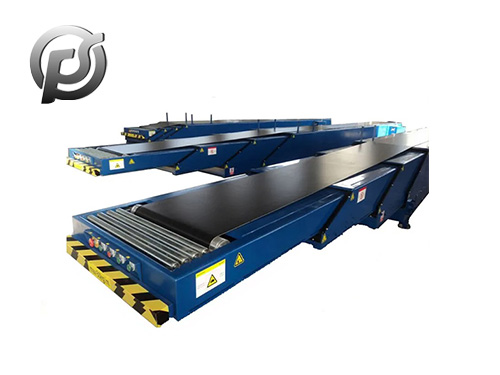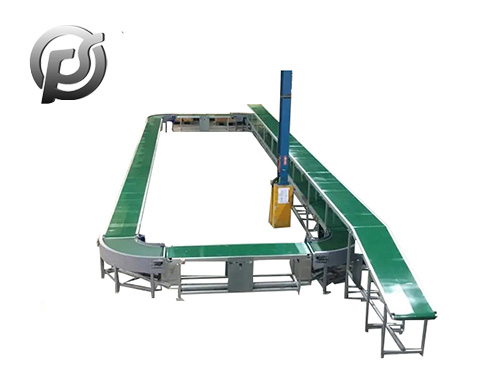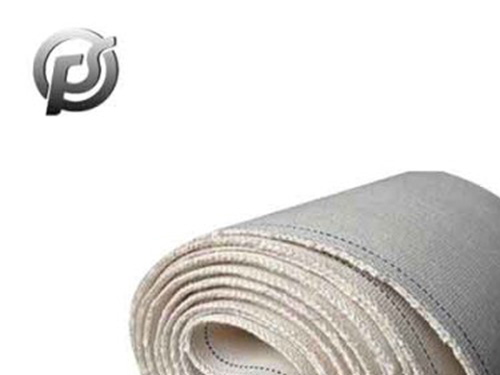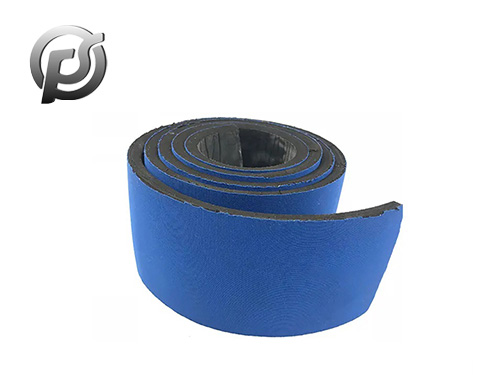Belt conveyor protection device has belt type anti tear, net type anti tear, longitudinal tear, underspeed, comprehensive protection, blocking, deviation, pull rope, emergency stop and other protective devices.
1. Belt type anti-tear -- bend the flat iron into an arc and weld 50mm bolts below, and connect both ends with wire rope and travel switch. When a hard object on the belt hits the flat iron or bolt, the travel switch will act and the belt will stop. Protect the belt from being scratched by hard objects. It is installed in front of the belt blanking point and in the middle of the upper and lower belt.
2. Mesh type anti-tear -- the width and belt width equal, length is longer than the width of the four corners of the square net with wire rope connected to the four travel switch, travel switch fixed to the belt rack, when necessary can do support frame. Installed between the upper and lower belts. When the belt is torn, there will be material leakage to the net, causing the travel switch action, to protect the belt from being torn more.
3. Vertical tear -- it is composed of a baffle mounted above the lower belt and a travel switch, installed in front of the belt tail drum. Function: Prevent the material on the lower belt from getting stuck between the belt and the roller to damage the belt and the roller. When the material hits the tailgate along the lower belt, the travel switch will act and the belt will stop. Need to check and clean up in time.
4. Underspeed -- The proximity switch installed on the non-driving drum will send a periodic signal to the control room when the drum is turning. When the belt breaks, skidding and so on caused by the installation of proximity switch drum can not rotate normally. The upper chance will alarm and slow down. Need to check in time. e. Comprehensive protection -- motor comprehensive protection device referred to as comprehensive protection, installed on the drawer of the distribution room, real-time monitoring of the motor current and voltage. If the motor has overvoltage, undervoltage, overcurrent, lack of items, etc., it will be fed back to the comprehensive insurance. The comprehensive insurance set the range, if within the range will be displayed on the upper computer, if beyond the range, the alarm stop. Need to check in time, clean up.
5. Anti-blocking -- the use of anti-blocking hammer switch, installed in the chute or chute mouth, vertical motionless. When there is material accumulation or collision, so that the hammer tilt Angle is greater than 20 degrees, the internal switch is disconnected, alarm stop. It is necessary to check whether the chute is blocked by mistake.
6. Run off -- It is composed of two sets of switches installed on both sides of the belt, in the normally open state. When the belt runs off lightly, it hits the off switch, the off switch is disconnected, and the upper computer will alarm and not stop. The belt continues to deviate, the re-deviating switch is disconnected, and the alarm stops.
7. Emergency stop -- cut off the power supply in an emergency. When the on-site personnel find an emergency, press the button in time to stop the equipment.
8. Rope switch - by manual operation of the safety protection device, by the rope, mechanical transmission mechanism and switch composition. When the belt conveyor in operation occurs abnormal phenomenon or endangers personal safety, anyone along the conveyor can conveniently pull the rope on the spot, through the switch contact closure or disconnection, send the belt conveyor electrical control a stop command, to realize the emergency stop. The rope switch is equipped with a mechanical locking mechanism that needs manual reset to ensure the safety of maintenance personnel and determine the location of the fault point. Using the single chip microcomputer technology, intelligent rope switch with position indication and display, the fault location can be determined more quickly and conveniently.
 Custom Conveyor Belts: Enhancing Efficiency and Productivity
Custom Conveyor Belts: Enhancing Efficiency and Productivity
 Stone Belt Conveyor: Efficient Material Handling Solution for Mining and Construction
Stone Belt Conveyor: Efficient Material Handling Solution for Mining and Construction
 Exploring the Dynamics of Conveyor Belt Manufacturing in China
Exploring the Dynamics of Conveyor Belt Manufacturing in China
 PE Conveyor Belts: Characteristics, Applications, and Advantages
PE Conveyor Belts: Characteristics, Applications, and Advantages